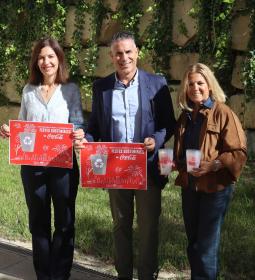Pine processionary moth

The pine processionary is a caterpillar that is part of the biodiversity of Mediterranean pine forests, being part of the diet of various animals.
Belonging to the Lepidoptera, better known as butterflies, throughout its life it goes through different phases, from egg to butterfly, passing through the most conflictive phase for its surroundings due to its stinging hairs, such as the caterpillar phase.
The larval phase involves 5 stages, during the fall and winter, the third stage larvae begin to group in colonies, forming the typical pockets of caterpillars that are observed in pine trees and it is not until late winter or early spring that their formation begins. They walk to the ground in single file, hence their name, to bury themselves and move on to the chrysalis phase, where the metamorphosis into a butterfly will occur, emerging and mating during the summer, for the subsequent laying of eggs that will begin the new cycle.
Naturally, its presence presents fluctuations in its number, but in areas where the presence of pine has occurred purely for anthropogenic reasons, it can lead to chronic infestations.
Consequences
The processionary caterpillar has very stinging hairs that are released as they pass, these irritate the skin and mucous membranes and pose a significant danger to pets, since direct contact, either with the nose or by biting or swallowing causes inflammation and can lead to death of the affected tissue.
Recommendations
- Do not walk through the grove in autumn - winter if you notice the presence of caterpillars or pockets in the crowns of the pines.
Notify local authorities if you find them in public areas.
If you have pets:
Do not take them through the pine forest if you see the presence of processionary caterpillars.
If you pass near an area with the caterpillar, wear your dog with a muzzle and monitor its behaviour
Symptoms that may indicate that your dog has been in contact with it: Intense itching, skin irritation, exaggerated excitement, swollen tongue, vomiting and hypersalivation.
How to act: wash the affected area with serum or water with baking soda, without rubbing. Don't make him vomit.
Control
- If there are pine trees with pockets in your garden, eliminate them
Elimination of clutches
Elimination of pockets
Placing physical barriers on the trunks to prevent descent
Installation of pheromone traps to capture males, preventing their mating and thus reducing the number of clutches
Application of phytosanitary products (Insecticides) to control the caterpillar phase
Regulation
- Ley 3/1993, de 9 de diciembre, Forestal de la Comunidad Valenciana.
- Decreto 98/1995 por el que se aprueba el Reglamento de la Ley 3/1993.
- Ley 43/2002, de 20 de noviembre, de Sanidad Vegetal.
- Ley 10/2014, de 29 de diciembre, de Salud de la Comunitat Valenciana.
Contact Technicians
- Sección Forestal - Servicio Territorial de Medio Ambiente - Alicante
- C/ Profesor Manuel Sala, 2 - 03003 Alicante
- Tel. 96 593 44 51
- gazquez_jua@gva.es
- Sección Forestal - Servicio Territorial de Medio Ambiente - Castellón
- Avda. Hermanos Bou, 47 - 12003 Castellón de la Plana
- Tel. 96 435 88 33
- romero_glo@gva.es
- Sección Forestal - Servicio Territorial de Medio Ambiente - Valencia
- C/ Gregorio Gea, 27 - 46009 Valencia
- Tel. 96 342 67 75
- saiz_mca@gva.es
LINKS
- PUBLICACION CONSELLERIA




